Did you know eating more fish could help protect you from brain injury? The SIRCuit explores the promise of omega-3 fatty acids, creatine, vitamin D, curcumin, high quality fats and carbohydrates, and good hydration in protecting athletes from sub-concussive injury.
Wonder why you’re not hungry after HIIT workouts? New research from Wilfred Laurier University reports that lactate produced during hard interval workouts influences appetite-associated hormones, causing post-exercise appetite suppression.
Discussion about concussion prevention and management typically focuses on changes to policies and practices, recognizing the signs and symptoms, and strict return to play protocols. But what about nutrition? Check out the two-part series on the role of nutrition in concussion protection and recovery in the SIRCuit.
Are you constantly feeling flat, tired and unmotivated? While stress could be the cause given the current circumstances, this infographic from the New South Wales Institute of Sport provides some other suggestions, including sleep patterns, dietary habits, overtraining and dehydration.
This is the second article in a two-part series about the links between nutrition and sport-related concussion. The first article focused on the role of nutrition in concussion recovery. This article focuses on the potential for nutrition to contribute to sub-concussion injury protection.
Repetitive sub-concussive injuries are the result of repetitive impacts on the head causing linear and rotational acceleration forces on the brain, but that are below a threshold to result in an observed or diagnosed concussion. Athletes participating in contact and combat sports such as football, soccer, rugby, boxing, wrestling and lacrosse experience a high number of these repetitive sub-concussive head impacts over the course of their training and competitive seasons. For example, research in elite rugby discovered that players experienced an average of 564±618 impacts per season (King, Hume, Brughelli & Gissane, 2014). In American football, measurements revealed youth and college-level athletes experienced anywhere from 100-1,000 impacts during the season (Bailes, Petraglia, Omalu, Neuman, Talavage, 2013).
Athletes with this type of injury often show no symptoms, and are therefore not removed from play (Johnson, Neuberger, Gay, Hallett, & Slobounov, 2014; King, Hume, Brughelli & Gissane, 2014; Bailes, Petraglia, Omalu, Neuman, Talavage, 2013). Sub-concussive injuries are still poorly understood, but evidence is starting to accumulate regarding their potential detrimental impact on long-term brain health, including chronic neurological syndromes such as chronic traumatic encephalopathy, which can result in a range of cognitive, emotional and behaviour difficulties and dysfunction (Oliver, Anzalone, & Turner, 2018; Baugh et al, 2012).
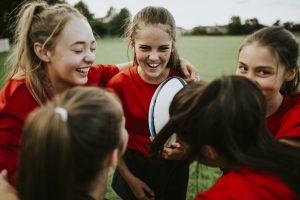
The effective management and prevention of sport-related sub-concussive injuries is complicated. Many of these injuries go unreported, undiagnosed and untreated because of the lack of short-term symptoms, creating barriers to effective management and recovery. Changes to rules and common practices within contact and combat sports can help prevent sub-concussive injuries, but changes to policy and sport culture can take time. What other options exist to support athlete’s health?
The goal of this article is to examine nutrition-related strategies that show promise in being protective to the brain in sports that experience a high volume of sub-concussive injuries. Both dietary patterns and nutritional supplementation have shown promise in this area when strategies are adopted both before and after impacts. The article will provide general dietary guidelines and explore specific nutrients and supplements that show strong evidence around neuroprotection.
Dietary strategies: Hydration and high-quality fats and carbohydrates
Similar to recommendations to support those with a diagnosed concussion, specific dietary strategies should also be adopted in sports with a high risk of sub-concussion injuries. Factors including dehydration and a diet high in saturated fat and refined sugar have shown to be harmful for cognitive function as they increase levels of oxidative stress (Oliver, Anzalone, & Turner, 2018; Meeusen & Decroix 2018; Wu, Molteni, Ying, & Gomez-Pinilla, 2003; Wu, Ying, & Gomez-Pinilla, 2004; Gomez-Pinilla, & Kostenkova, 2008; Wu, Ying, & Gomez-Pinilla, 2014; Weber et al, 2013). Athletes should work to adopt a nutrition foundation that includes high-quality carbohydrate and fat choices 80-90% of the time, as well as optimizing daily hydration. Table 1 outlines a variety of high-quality carbohydrate and fat choices, along with hydrating fluids. Looking to the support from a sport dietitian can help an athlete improve their day-to-day foundational diet.
Table 1: List of hydrating fluids, high-quality carbohydrate and fat choices (Maughan et al, 2016; HealthLinkBC, 2018)
|
||
| Hydrating Fluid Choices | High-Quality Carbohydrates Choices | High Quality Fat Choices |
|
Fiber rich grains:
Legumes:
Starchy vegetables:
All fruits:
Dairy & dairy alternatives:
|
|
Athletes participating in high sub-concussion risk sports should also ensure they are well hydrated during training and competition, and work with a sport dietitian to fine tune their pre-training and pre-game meals and snacks to include quality carbohydrates and fat options. Table 2 provides athletes with some general direction on dietary recommendations and ideas around training and competition.
Table 2: Pre-training/pre-game meal and snack ideas (Thomas, Erdman, & Burke, 2016) |
|||
| Timing Before Training | 2-4hrs before | 1-2hrs before | 30-60min before |
| Dietary Recommendations |
|
|
|
|
Sample Meal and Snack Ideas |
|
|
|
Creatine
As described in part one of this series, creatine provides a reserve of adenosine triphosphate (ATP) that can support the increased energy requirements associated with recovery of the brain after a concussion (Ainsley Dean, Arikan, Opitz, & Sterr, 2017). From a neuroprotective perspective, ensuring a diet high in creatine to increase brain concentrations could contribute to maintaining energy homeostasis. This neuroprotective effect was shown when healthy subjects were supplemented with creatine monohydrate and then asked to complete a number of cognitive tasks in an oxygen deprived state, simulating the energy crisis experienced with sport concussion and potentially sub-concussive injuries (Turner, Byblow, & Grant, 2015; Ainsley-Dean, Arikan, Opitz, & Sterr, 2017). Participants receiving prior supplementation showed improved cognitive performance in this hypoxic-induced state (Turner, Byblow, & Grant, 2015). By creating a high concentration of creatine in the brain ahead of injury, a buffering action may be created to support recovery after sub-concussion injuries (Oliver, Anzalone, & Turner, 2018; Kreider et al, 2017).
Taking creatine prior to injury may be the best course of action because increasing creatine stores in the brain is a slow process (Ainsley-Dean, Arikan, Opitz, & Sterr, 2017). Compared to muscle creatine stores, which can be topped up in as little as 5-7 days through a combination of a animal protein-based diet and supplementation (Kreider et al, 2017), creatine uptake capacity in the brain is difficult to estimate and higher levels of supplementation for longer periods may be needed to increase concentrations (Dechent, Pouwels, Wilken, Hanefeid, & Frahm, 1999; Kreider et al, 2017). For example, four weeks of supplementation with creatine (20g per day) showed considerable variability in total creatine increases in the brain between subjects (3.5-13.3%), with the smallest increases seen in the largest subjects (Dechent, Pouwels, Wilken, Hanefeid, & Frahm, 1999). More recent research has shown that 20g of creatine provided for 7 days increased brain creatine by an average of 9.2% (Turner, Byblow, & Grant, 2015).
Specific creatine dosing strategies and timelines to increase brain stores are still needed, however a longer loading period of 2-4 weeks at 20g/day followed by a maintenance dose of 5g/day throughout high sub-concussion risk periods in an athlete’s season is a potential recommendation (Oliver, Anzalone, & Turner, 2018). If you are thinking about a creatine supplement, first speak to a sport dietitian to discuss a safe and appropriate supplement and dosing strategy.
Omega-3 fatty acids
The neuroprotective role and mechanism of omega-3 fatty acids is multidimensional and not yet fully understood. Docosahexaenoic acid (DHA), a specific omega-3 fatty acid, has shown neuroprotective effects in rodent models with greatest efficiency in doses of approximately 40mg/kg/day, equivalent to approximately 1-3g/day for the typical human (Bailes & Mills, 2010; Mills, Hadley, & Bailes, 2011). Since most athletes, especially those involved in combat and contact sports, are larger than the “typical” human, high doses equivalent to 3-4g/day may be more appropriate (Oliver, et al, 2016).
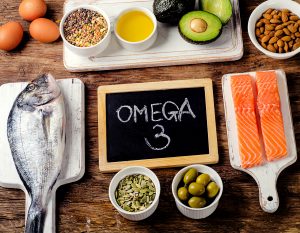
Research generated from NCAA football players examined responses to DHA doses of 2, 4 and 6g/day and their neuroprotective role throughout an entire season (Oliver et al, 2016). Results showed that all supplemented doses of DHA reduced the rise in specific head trauma biomarkers linked with damage to the brain during the football season, compared to a placebo (Oliver et al, 2016). This demonstrated the importance of increasing plasma DHA concentration in athletes at high risk of sub-concussion injuries, and reinforced that higher doses maybe required in larger athletes (Oliver et al, 2016).
Some food sources provide a rich concentration of DHA and eicosapentaenoic acid (EPA – another omega-3 fatty acid), specially fish sources including salmon, mackerel, anchovies and sardines (Dietitians of Canada, 2016). However, unless consumed daily, it is difficult to meet needs, especially in high sub-concussion risk sports. In fact, omega-3 Index scores (indicating the percentage of EPA and DHA in the blood) have declined significantly in North America, from 8.23% in 1909 to 3.84% in 1999 (Blasbalg, Hibbeln, Ramsden, Majchrzak, & Rawlings, 2011). Amongst athletes, a study of German elite winter endurance athletes revealed the majority were below the target index score range of 8-11% (Von Schacky, Kemper, Haslbauer, & Halle, 2014). This suggests supplementation may be required in addition increasing dietary intake.
Athletes participating in high sub-concussion risk sports should look at ways to increase their dietary omega-3 intake, and from there speak with a sport dietitian about safe and effective supplementation strategies. Larger athletes like those in rugby, hockey and football may required higher doses compared to smaller framed athletes (Oliver et al, 2016; Oliver, Anzalone, & Turner, 2018). If recommending a specific omega-3 supplement, sport dietitians should consider the compliance and tolerability of these supplements as they can cause gastric upset, especially if recommending larger doses. A combination of food sources and supplementation may be the best course of action.
Curcumin/Curcumin + DHA
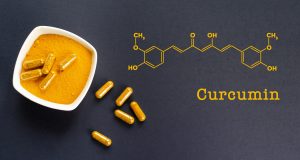
Curcumin is the active compound in the spice turmeric, used medicinally for its antioxidant and anti-inflammatory properties. Curcumin dissolves in fats and can cross the blood-brain barrier exhibiting neuroprotective properties on the brain both before and after injury (Petraglia, Winkler, & Bailes, 2011). Most of the research around curcumin pre and post brain injury has been done in animal models, and also examined the combination of curcumin and the omega-3 acid DHA, with their combined effects showing promise compared to the nutrients taken individually. Animals provided with a diet of curcumin and DHA prior to impact showed two important scores: 1) higher levels of brain-derived neurotrophic factor, which plays an important role in growth, maturation and maintenance of neurons; and 2) improved cognitive scores during cognitive learning tests (Wu, Ying, & Gomez-Pinilla, 2014). Results also showed the combined effect better regulated enzymes that actually create DHA, and more recent research has shown that other omega-3 fatty acids (e.g. Alpha-linoleic acid) better metabolized DHA when curcumin was added to the diet, leading to higher concentration in the brain (Wu et al, 2015).
One of the major drawbacks of curcumin is its poor bioavailability, with limited absorption from the gut and quick elimination from the body (Oliver, Anzalone, & Turner, 2018). Efforts have been made by different companies to formulate curcumin to increase absorption within the body, however currently there is no specific dose recommendation for curcumin supplementation. Athletes should speak to a sport dietitian about specific curcumin supplements or ways to add turmeric to meals and to improve absorption.
Vitamin D
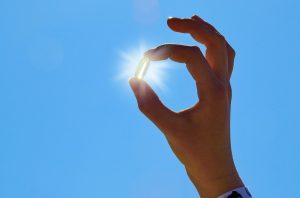 Vitamin D (the “sunshine” vitamin) is another therapeutic nutritional intervention for brain injury, and supplementation has shown neuroprotection in areas around traumatic, ischaemic and degenerative brain injury (Lawrence & Sharma, 2016). Vitamin D deficiency in older populations has been associated with neurodegenerative disorders, including increased prevalence of Alzheimer’s disease, dementia and cerebrovascular lesions (Petraglia, Winkler, & Bailes, 2011; Lawrence, & Sharma, 2016). In fact, cognitive impairments were up to four times greater in older adults that were severely deficient in vitamin D (Llewellyn., et al 2010). The mechanisms behind this neuroprotection, as well as its role in recovery post concussion, are complex and multifaceted with vitamin D showing reduction in inflammation, reducing neuronal death, and improving cognitive functional outcomes (Lawrence & Sharma, 2016). This suggests that vitamin D may possess neuroprotective properties and the importance in avoiding deficiency (Petraglia, Winkler, & Bailes, 2011).
Vitamin D (the “sunshine” vitamin) is another therapeutic nutritional intervention for brain injury, and supplementation has shown neuroprotection in areas around traumatic, ischaemic and degenerative brain injury (Lawrence & Sharma, 2016). Vitamin D deficiency in older populations has been associated with neurodegenerative disorders, including increased prevalence of Alzheimer’s disease, dementia and cerebrovascular lesions (Petraglia, Winkler, & Bailes, 2011; Lawrence, & Sharma, 2016). In fact, cognitive impairments were up to four times greater in older adults that were severely deficient in vitamin D (Llewellyn., et al 2010). The mechanisms behind this neuroprotection, as well as its role in recovery post concussion, are complex and multifaceted with vitamin D showing reduction in inflammation, reducing neuronal death, and improving cognitive functional outcomes (Lawrence & Sharma, 2016). This suggests that vitamin D may possess neuroprotective properties and the importance in avoiding deficiency (Petraglia, Winkler, & Bailes, 2011).
Specific to athletes, vitamin D deficiency of <50nmol/L is common, with vitamin D status depending on a number of factors including age, genetics, geographic locations and the amount of sun exposure which is influenced by the time of year, protective equipment worn, sunscreen use, etc.(Lawrence & Sharma, 2016; Larson-Meyer, 2015). Given the neuroprotective role of vitamin D, assessing and optimizing vitamin D status with a goal of >75nmol/L (Larson-Meyer, 2015; Owens, Allison & Close, 2018) throughout the year would be a valuable intervention adopted by high-performance sport science teams, especially those working with high sub-concussion risk sports. Supplementation strategies have often been considered as the best course of action – access to adequate sun exposure can be difficult with athlete’s training schedules and location; and dietary sources (including certain fish, eggs and fortified products including dairy and dairy alternatives) provide roughly 200 IU/day (Lawrence & Sharma, 2016) well below recommended intakes of 600-4000 IU/day (Dietitians of Canada, 2019). Currently, there are no specific guidelines on vitamin D supplementation needs specific to neuroprotection or concussion recovery. At this point athletes involved in sports with high sub-concussion risk should ensure they are avoiding deficiency and working with both a sport dietitian and sport medicine doctor to monitor and optimize their vitamin D status (Larson-Meyer, 2015; Lawrence & Sharma, 2016).
Implementing a nutritional approach to sub-concussion protection in high-risk sports
With the knowledge of what nutrients may protect or limit the effects of sub-concussion injury, the following steps can help athletes, coaches and other members of the support team apply the above nutrition considerations.
- Seek professional assistance: A sport dietitian can educate athletes, coaches, parents and the medical team on key nutrition principles to optimize athlete health to support sub-concussion protection. This includes education on grocery shopping and meal preparation for training and competition.
- Track it: Integrate hydration monitoring during training and competition, and consider regular vitamin D and omega-3 screening for all athletes.
- Plan ahead: When travelling, review hotel and venue menus in advance, and look at ways to incorporate foods rich in omega-3 fatty acids as well as recipes that include turmeric.
- Safe supplementation: Look to the support of a sport dietitian to help determine the need and dosing of safe supplements including omega-3 fatty acids and creatine. Athletes should look to third-party tested supplements including NSF Certified for Sport and Informed Sport tested supplements that rigorously test for banned substances.

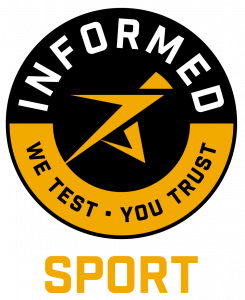
Key tips for athletes
- Build your nutrition foundation by ensuring 80-90% of your food choices come from high quality carbohydrate and fat choices.
- Ensure you are well hydrated each day, especially before and during training or competition.
- Increase your intake of omega-3 fatty acid-rich foods.
- Consider adding turmeric to cooking, especially to curries, soups and stews.
- Maintain optimal vitamin D status all year round. Speak to your sport medicine doctor about individual blood work.
- If considering a supplement, speak to a sport dietitian to discuss the need, safety and specific dosing.
Check out the Spring SIRCuit! This collection of articles, provides timely and relevant research and insights relating to leadership, athlete development, and high performance sport:
March is Nutrition Month. The benefits of proper nutrition for athlete training and performance are well established, however, the role of nutrition is often overlooked as a support for sport concussion recovery. Learn about the importance of hydration, omega 3 fatty acids, creatine, polyphenols and vitamins to concussion recovery in the SIRCuit.
Information on optimal nutrition for athlete development and performance can be tricky to navigate. However, research suggests there are nine “staple” foods proven for performance gains, a sharper competitive edge, and improved general health. Do you agree?
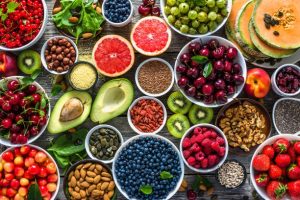
Intermittent fasting, or eating during a certain time period, has become increasingly popular. Research suggests intermittent fasting may be beneficial for weight loss and cardiometabolic health in sedentary populations, but the effects on training and performance have not been well-studied.
As the temperature drops, many Canadians will head outside to ski, skate, slide and snowshoe. Winter athletes must pay close attention to fueling and hydration. Visit Alberta Alpine for tips on staying hydrated during cold weather activities.
